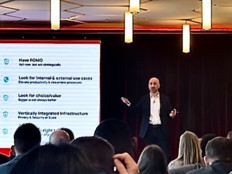What Challenges Exist in Price Optimization?
As noted by Yarnell, three core challenges exist in price optimization:
- Data collection: Given the sheer amount of pricing and consumer data now available, retailers often struggle to find and collect reliable and relevant data points. To address this challenge, Yarnell suggests the use of analytic technologies, Internet of Things sensors and machine learning tools capable of automating the collection process to provide accurate data.
- Analysis paralysis: With data in hand, retailers need to make sure it gets to the right people. “Analysis paralysis is basically wasted time, when the correct business units don’t have the necessary information they need to make changes,” says Yarnell. “This lack of movement can allow competition to take away market share due to slow reaction times.”
- Product formatting: Yarnell also notes that retailers must understand how customers consume products — and what format they prefer — in order to optimize price. For example, e-commerce pricing may differ significantly from the curbside pickup for the same product, depending on both consumer preference and overall demand.
What Kind of Technologies Can Help Optimize Pricing?
To optimize pricing, retailers need technologies that can analyze buyer behaviors, understand customer journeys and connect with consumers to create brand loyalty.
“By using video analytics tools such as Cisco Meraki or DNA Spaces, retailers can better understand dwell times within stores and offer promotional messaging via dynamic signage that is customized to specific demographics,” says Yarnell.
These tools also provide the actionable data retailers need to create in-store merchandising plans that optimize sales volume based on both price and location.
MORE FOR RETAIL: How many problems can AI solve in retail?
Yarnell also points to the use of natural language processing tools that make it possible to identify friction points in the purchasing process that may impact consumer conversion. Eliminating these points wherever possible can help retailers maximize product price adjustments.
In addition, companies can benefit from multichannel communication strategies that let them customize consumer offers. “These offers create a sense of brand loyalty,” says Yarnell, “and make the buying decision easier for the consumer.”
Robust brand loyalty also makes it possible to optimize prices with less pushback from customers.
How Do Models Help Price Optimization?
Price optimization models combine current and past purchasing data to help predict future outcomes.
Automation is essential to both the speed and accuracy of these models. “By eliminating manual processes, information gathered provides a more accurate picture to help pinpoint necessary change,” Yarnell explains.
That makes sense: Given the sheer amount of pricing and consumer data now generated by retailers every day, attempting to manually identify and sort key sources is an exercise in frustration. By the time enough data is gathered to make pricing predictions, market trends will have already moved on.
Click below to receive exclusive content about AI and ML when you register as an Insider.












